The Origin Of The Humble Clothes Iron
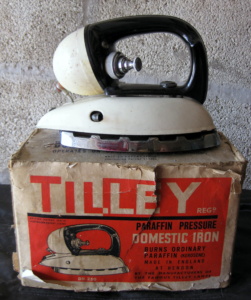
The iron let’s straighten things out
I have been pondering for a few days what to write as a guest blog for Eiffion’s followers on collectibulldogs.com. I have already written about collecting cat related items: can’t do that again. I thought about writing collecting dog ephemera but Eiffion has me beat on that one. Hence, I have decided to talk to you about something totally different, and that is the humble clothes iron!
Don’t ask me why! It’s not as if I even like ironing. It seems to be one of the most pointless household chores. You wash your clothes, hopefully in a washing machine if you are luck enough to own one. You stick them outside or in the tumble dryer to dry. Then you spend hours taking out the creases, wear the beautifully ironed garment, sit down for 5 minutes, and the creases reappear so that you look like a crumpled mess! But see someone in an un-ironed blouse or shirt and we all whisper behind that person’s back about how lazy they are. Even worse, I have heard the comment “Hasn’t your wife got an iron?”
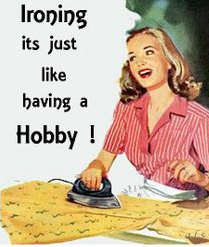
Anyway, this blog isn’t about gender equality in ironing. I could spend a full day debating this with everyone and we would all end up disagreeing! The only thing my other half has ironed is bread to produce toast when the toaster wasn’t working!
The Humble Clothes Iron
We have been trying to smooth creases out of our clothes, ‘ironing,’ for many centuries. The Chinese were thought to be the first users of a process using hot smoothers in the form of hot coal in a pan, which was run up and down a piece of cloth held taut by two other people. In other areas of the World, people used glass, stones, mangles, and presses: none of these were heated and it must have taken an age!
It wasn’t until the middle ages that blacksmiths starting forging the flat iron, also known as sad (derived from the word ‘solid’) irons or smoothing irons. You had to have at least two in order to keep ironing at a reasonable rate. The flat part of each iron was heated. You then ironed a garment on a table or board until the first iron went cold and then you start using the second iron whilst the first iron is reheating.
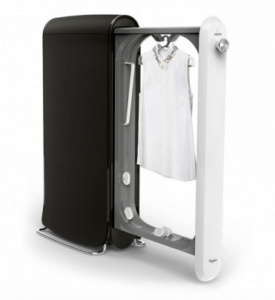
Traditional Flat or Sad Iron
From a collector’s point of view, the flat irons were hand made and the designs differed from blacksmith to blacksmith; never mind country to country. Some of the designs are actually a work of art!
Many women started earning a few pennies by taking in other people’s laundry and ironing. It was a back backing job for very little return.
No steam, no flexes, no electricity….
How did you know if the iron was hot enough to use but not hot enough to burn clothes? Well, my Granny told me that she used to spit on the iron (it boils at lower temperature than pure water)… By the end of the ironing session (which would take all day) you had no saliva left!
Today, there are many Aga/ Rayburn oven owners who know the benefit of folding clothes, once washed, and leaving them on top of the Aga or in the warming oven. No need for ironing then, unless the cat also finds the warm spot in which case there is no contest, the cat wins!
What we needed was a self-heating flat iron. The first to arrive were charcoal filled irons and other types of fuel from ethanol to paraffin (kerosene). These were quite successful and are still used in some parts of the World today.
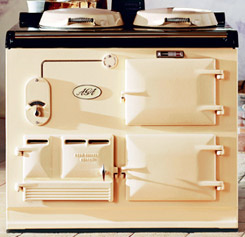
Vintage AGA oven
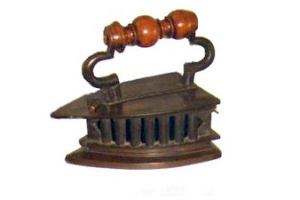
Antique Charcoal Filled Flat Iron
Inventors also tried the cordless flat iron, where the iron was heated on a stand connected to an energy supply e.g. gas and not dissimilar in principle to the modern day ironing centre. But it was Henry Seely and Dyer whom patented an electric flat iron in 1883.
The first commercially successful iron was made by Hotpoint in the 1920s. Initially, the irons were connected to the electricity supply via the light bulb ceiling socket! By the 1950s many people owned an electric iron, although they were still horrendously expensive. It probably only had three heat settings but was significantly better than the old sad iron!
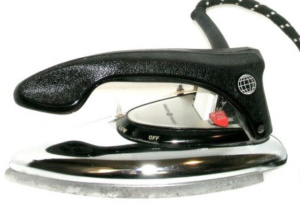
1950s Electric Iron
In 1953, the year of Queen Elizabeth”s Coronation in the UK, you could still buy an iron without wires and flexes? Instead, you could use an iron directly heated by paraffin! The irons were made by Tilley , whom are probably better known for the paraffin ‘Tilley Lamp’.
I just love this 1953 advert for the iron: how times have changed! I wonder if Her Majesty had one to iron her coronation robes? The advert reads: –
New!, New!, New! Tilley Paraffin Pressure Domestic Iron. No Wires, -No Flexes.
Enjoy yourself in Coronation year! Do away with ironing day “blues” the Tilley way. The Tilley Paraffin Pressure Iron can give you more leisure and prevent frayed tempers in 1953! A completely self contained unit, it can be used in and out of doors, on holiday or at home. No wires or flexes to worry you; it saves time and money. Burns 4 hours on only 1/3rd pint of ordinary Paraffin. Finger-tip heat control and bevel-edged plate increases ironing efficiency. The streamlined cream enamelled body will last and last. In Coronation year and in the years that follow, Tilley Irons will prove themselves to be a friend to every housewife. Price 68/6 complete.
The design and functionality of the iron has changed considerably since the 1950s. Most modern irons seem to be able to do anything and everything, but I bet they won’t be considered as collectible as the old handmade irons of our industrial past.
Personally, I’ll be pleased once the self ironing/ hands-free irons (or robots) are cheap enough for us to have. Can’t be long to wait now! Just have a look at this SWASH (an invention from P&G and Whirlpool): it washes and irons clothes!
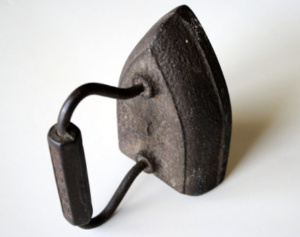
The SWASH
But wait, what if you want to be a non-crumpled camper? Do you take your fold away electric travel iron with you in your tent. No? Perhaps you need a 1953 paraffin heated iron in your suitcase!
Well readers, I hope you enjoyed my little meander through the development of the humble clothes iron?
Thank you to Eiffion for allowing me to guest blog and I hope to have a chat with you all again soon, if Eiffion invites me to his blog again….
Here’s a link to the Brighton Argus Story on Collectibulldogs and our exhibition

the clothes iron i was surprised to find this on the website but it’s actually quite cool to read.